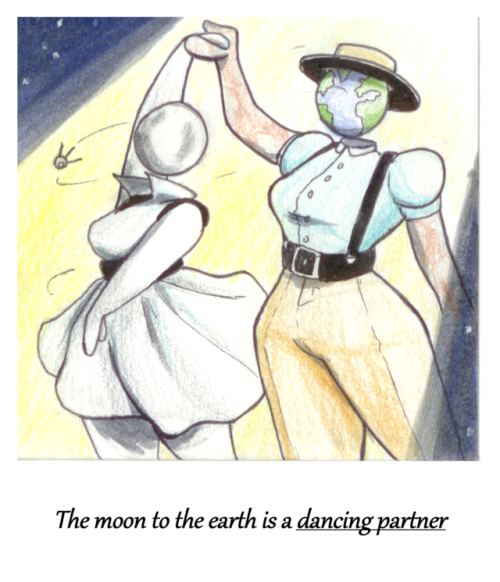Ourvioletdeath - Inner Ramblings Of The Mind

More Posts from Ourvioletdeath and Others

Researchers at King’s College London found that the drug Tideglusib stimulates the stem cells contained in the pulp of teeth so that they generate new dentine – the mineralised material under the enamel.
Teeth already have the capability of regenerating dentine if the pulp inside the tooth becomes exposed through a trauma or infection, but can only naturally make a very thin layer, and not enough to fill the deep cavities caused by tooth decay.
But Tideglusib switches off an enzyme called GSK-3 which prevents dentine from carrying on forming.
Scientists showed it is possible to soak a small biodegradable sponge with the drug and insert it into a cavity, where it triggers the growth of dentine and repairs the damage within six weeks.
The tiny sponges are made out of collagen so they melt away over time, leaving only the repaired tooth.

(Image caption: Two Aplysia sensory neurons with synaptic contacts on the same motor neuron in culture after isolation from the nervous system of Aplysia. The motor neuron has been injected with a fluorescent molecule that blocks the activity of a specific Protein Kinase M molecule. Credit: Schacher Lab/Columbia University Medical Center)
Select Memories Can Be Erased, Leaving Others Intact
Different types of memories stored in the same neuron of the marine snail Aplysia can be selectively erased, according to a new study by researchers at Columbia University Medical Center (CUMC) and McGill University and published in Current Biology.
The findings suggest that it may be possible to develop drugs to delete memories that trigger anxiety and post-traumatic stress disorder (PTSD) without affecting other important memories of past events.
During emotional or traumatic events, multiple memories can become encoded, including memories of any incidental information that is present when the event occurs. In the case of a traumatic experience, the incidental, or neutral, information can trigger anxiety attacks long after the event has occurred, say the researchers.
“The example I like to give is, if you are walking in a high-crime area and you take a shortcut through a dark alley and get mugged, and then you happen to see a mailbox nearby, you might get really nervous when you want to mail something later on,” says Samuel Schacher, PhD, a professor of neuroscience in the Department of Psychiatry at CUMC and co-author of the paper. In the example, fear of dark alleys is an associative memory that provides important information—e.g., fear of dark alleys—based on a previous experience. Fear of mailboxes, however, is an incidental, non-associative memory that is not directly related to the traumatic event.
“One focus of our current research is to develop strategies to eliminate problematic non-associative memories that may become stamped on the brain during a traumatic experience without harming associative memories, which can help people make informed decisions in the future—like not taking shortcuts through dark alleys in high-crime areas,” Dr. Schacher adds.
Brains create long-term memories, in part, by increasing the strength of connections between neurons and maintaining those connections over time. Previous research suggested that increases in synaptic strength in creating associative and non-associative memories share common properties. This suggests that selectively eliminating non-associative synaptic memories would be impossible, because for any one neuron, a single mechanism would be responsible for maintaining all forms of synaptic memories.
The new study tested that hypothesis by stimulating two sensory neurons connected to a single motor neuron of the marine snail Aplysia; one sensory neuron was stimulated to induce an associative memory and the other to induce a non-associative memory.
By measuring the strength of each connection, the researchers found that the increase in the strength of each connection produced by the different stimuli was maintained by a different form of a Protein Kinase M (PKM) molecule (PKM Apl III for associative synaptic memory and PKM Apl I for non-associative). They found that each memory could be erased – without affecting the other — by blocking one of the PKM molecules.
In addition, they found that specific synaptic memories may also be erased by blocking the function of distinct variants of other molecules that either help produce PKMs or protect them from breaking down.
The researchers say that their results could be useful in understanding human memory because vertebrates have similar versions of the Aplysia PKM proteins that participate in the formation of long-term memories. In addition, the PKM-protecting protein KIBRA is expressed in humans, and mutations of this gene produce intellectual disability.
“Memory erasure has the potential to alleviate PTSD and anxiety disorders by removing the non-associative memory that causes the maladaptive physiological response,” says Jiangyuan Hu, PhD, an associate research scientist in the Department of Psychiatry at CUMC and co-author of the paper. “By isolating the exact molecules that maintain non-associative memory, we may be able to develop drugs that can treat anxiety without affecting the patient’s normal memory of past events.”
“Our study is a ‘proof of principle’ that presents an opportunity for developing strategies and perhaps therapies to address anxiety,” said Dr. Schacher. “For example, because memories are still likely to change immediately after recollection, a therapist may help to ‘rewrite’ a non-associative memory by administering a drug that inhibits the maintenance of non-associative memory.”
Future studies in preclinical models are needed to better understand how PKMs are produced and localized at the synapse before researchers can determine which drugs may weaken non-associative memories.

I can relate to this on a spiritual level.
*chemicals*
Wayfaring: do you want to go ahead and get your flu shot today?
Patient: no, I don’t get them. I’m not against vaccines, just the flu shot.
Wayfaring: why is that?
Patient: I’m just not comfortable with all the bad stuff they put in it.
Wayfaring: ok well let’s talk about it. What substances in particular worry you?
Patient: oh uhhh… you know… the bad ones.
Wayfaring:




Biden is a 4-month-old Golden Retriever named after the former vice president. His owner Sidney took him to the Capitol to see Joe Biden give a speech.
“As soon as he saw the dog during his speech, he pointed at the dog, tapped his friend and then started like cracking up. Right towards the end, I kind of signaled him, and he gave me a wink to come over,” Sydney said.
“When I told him his name was Biden, his face lit up and he started kissing the dog, which is like exactly what I expected Joe Biden would do”
Source: Buzzfeed






this was an assignment from a bit ago but i kept forgetting to scan it in >.>
You punch in a date, and activate the time machine. There’s a flash of light, and you black out.
You awaken in what looks like a hi-tech hospital, with people walking around, conversing in a language you’ve never heard before. One person walks over to you, and says, in fluent English; “Well, you’ve managed to not only travel several thousand years into the past, but you’ve also managed to get into a timeline that honestly shouldn’t exist anymore. So, how do you feel?”



The Björketorp Runestone & Curse
The Björketorp Runestone is one of many standing stones (menhir) located in Bleking, Sweden and is one of the world’s tallest runestones, measuring 13.7 feet (4.2 m) high. It is part of a stone circle with two other blank standing stones, with several other solitary stones in the surrounding regions. Most scholars date the runestone’s inscription to the 7th century AD. It’s carved with a type of runes that form an intermediate version between the Elder Futhark and the Younger Futhark. The runestone is inscribed on both sides, the shorter message appears to say “I foresee perdition” or “prediction of perdition” and the longer side’s inscription (pictured) translates as:
“I, master of the runes(?) conceal here runes of power. Incessantly (plagued by) maleficence, (doomed to) insidious death (is) he who breaks this (monument). I prophesy destruction / prophecy of destruction.”
Local lore says that the curse came true at one point. Long ago, a man wanted to move the runestone so that he could have more room to farm, so he piled wood around it to attempt to heat the stone and then crack it with water. The weather was calm with no wind at the time, but as soon as he lit the fire a sudden gust came and lit the man’s hair aflame. He dropped to the ground to put it out but his clothes caught fire and the poor man died in agony. The flame around the runestone, however, was miraculously extinguished, as if someone had smothered the fire.





Onward, steed!
-
 system0n reblogged this · 3 months ago
system0n reblogged this · 3 months ago -
 margaret-the-sylvia liked this · 3 months ago
margaret-the-sylvia liked this · 3 months ago -
 angelic-odette liked this · 4 months ago
angelic-odette liked this · 4 months ago -
 avalanche4318a liked this · 9 months ago
avalanche4318a liked this · 9 months ago -
 mercurymiscellany liked this · 9 months ago
mercurymiscellany liked this · 9 months ago -
 adulthumanproblem reblogged this · 9 months ago
adulthumanproblem reblogged this · 9 months ago -
 autumn-foxfire reblogged this · 9 months ago
autumn-foxfire reblogged this · 9 months ago -
 katiekinks-blog reblogged this · 1 year ago
katiekinks-blog reblogged this · 1 year ago -
 alwayssacred liked this · 1 year ago
alwayssacred liked this · 1 year ago -
 anameofjones liked this · 1 year ago
anameofjones liked this · 1 year ago -
 cityclouds liked this · 2 years ago
cityclouds liked this · 2 years ago -
 desperatecherrygarbage liked this · 2 years ago
desperatecherrygarbage liked this · 2 years ago -
 a--random--person liked this · 2 years ago
a--random--person liked this · 2 years ago -
 miiloserdie liked this · 3 years ago
miiloserdie liked this · 3 years ago -
 iknitsocks liked this · 3 years ago
iknitsocks liked this · 3 years ago -
 terracegardenphoenix reblogged this · 3 years ago
terracegardenphoenix reblogged this · 3 years ago -
 palrreo liked this · 3 years ago
palrreo liked this · 3 years ago -
 moss-and-crows liked this · 3 years ago
moss-and-crows liked this · 3 years ago -
 anitaani liked this · 3 years ago
anitaani liked this · 3 years ago